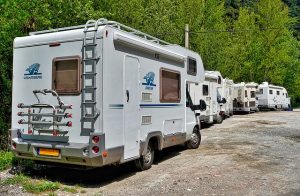The Benefits of “CSA” Standards
CSA Standards — Tiny House buzzwords that you might have heard by now. So what are they and should you care? Well we want to be sure that you make a great buying decision so let’s set things straight!
If you plan on living in your tiny house, having a CSA Z240 RV certified Tiny means that according to the industry, it meets specific standards and is intended for use as a permanent residence. These guidelines don’t apply to tiny houses on foundations which instead follow residential building codes. The Emerald Village Tiny House Prototype from Tent City Urbanism is an example (USA).
If you are wondering about the difference between a tiny house and an RV, check out this comparison that we did for our readers
What does it mean?
Z240RV Recreational Mobile Homes are recreational in nature, towed by another vehicle, are limited in size to max width of 8.5′ and max length of 41′ including tongue, and have;
- NO R VALUE REQUIREMENTS
- NO STRUCTURAL REVIEW REQUIREMENTSLarger tiny houses may require special a commercial driver’s license and/or special permits when being towed.
Comparing CSA Standards
- RV: Legally, a tiny house on wheels is an RV. However, a THOW differs from a traditional RV in that an RV is a recreational vehicle intended for non-permanent living, whereas a THOW is built as a residence. In addition, while RVs are typically have certification to prove that (either by the RVIA or an independent service), a THOW may be owner-built and may or may not be certified.
- Park Model RV: Park models are RVs that are either wider than 8.5 feet in the transport mode or are greater than 320 sq ft in the set up mode. Park Model RVs, like regular RVs, must still be no bigger than 400 sq ft in the set up mode. While sometimes referred to as a “park model mobile home,” a park model is a type of RV and is intended for non-permanent living.
- Manufactured Home: A THOW is not a manufactured home because it is not built in a factory and it is often smaller than 320 square feet. A manufactured home (formerly known as a mobile home) are built to different standards and displays a unique certification label on the exterior of each unit. Manufactured homes are built in the manufacturers controlled environment ( a manufacturing plant), then transported to the owner on a permanent chassis.
Click HERE to see a CSA Standards Comparison
https://www.youtube.com/watch?v=6RYt3oKlanM
If you want to live in an RV park or find places to live in urban settings, it is recommended that your Tiny House is CSA Z240 RV certified as it is considered an RV.
Ontario’s GreenTerra Homes was established June 2012 and is the first and only CWB CSA certified steel frame home factory in Canada. GTH is also one of the few facilities in Canada with multiple CSA Certifications for the production of RV Homes, Mobile Homes, Modular Homes, Park Model Homes and prefabricated kit homes. They are one of the most trusted sustainable builders in the country offering steel frames, great service and more. This is the type of builder that you would want to work with because they are experts on Tiny Homes AND you will have all of your bases covered if you work with them on going tiny!
To learn more about GreenTerra Homes contact:
sales@GreenTerraHomes.com
website
Facebook
LinkedIn
Twitter
Call
USA: 800-403-8894
Canada: 800-496-0981
Fax: 888-419-0827
Manufacturing Facility – 10 Douglas Road, Quinte West ON K0K 1B0
Discussion: What do you think about tiny homes versus RV’s? Let us know in the comments below, we are curious about what Canadians think and how we can help people make great decisions. Other Canadians also want to hear your thoughts! 🙂




IMHO…RVs are built by a company with the intent of making a significant profit. They cut cornets where they can to increase profit, anf they are not meant for 365 days a year living. If this is the intent, then major changes will be needed.
A Tiny Home, because of its year-round use, is usually constructed with close control of the intended buyer. It is (or should be) made with better materials (especially better insulation) and features. The layout should be customized to the owners preferences. Portions of it, like stairs as an example , should not be governed by codes….leaving it up to what the owner deems ‘enough’. Building codes for THs just restricts creativity, which is essential in TH.
great info! interesting
Making tiny homes be RVs is putting a square peg into a round hole. Just because there are no tiny home guidelines, or building codes, we slap the name RV on it so it can comply with something. This is a bandaid fix! The real issue is that tiny homes are here to stay, and a set of governance should be put in place. That would include safety issues, egress, transportation guidelines, lower headrooms, broader scope for accessing second storeys, etc. Etc. A Tiny home is not an RV. It is not a Recreational Vehicle. It is a home. It is housing. Lets stop calling it something its not.